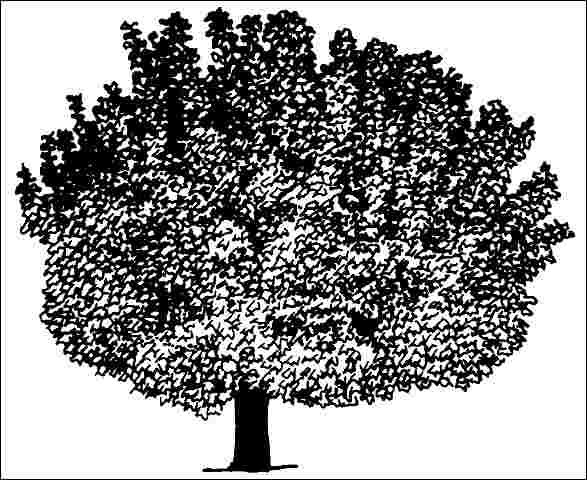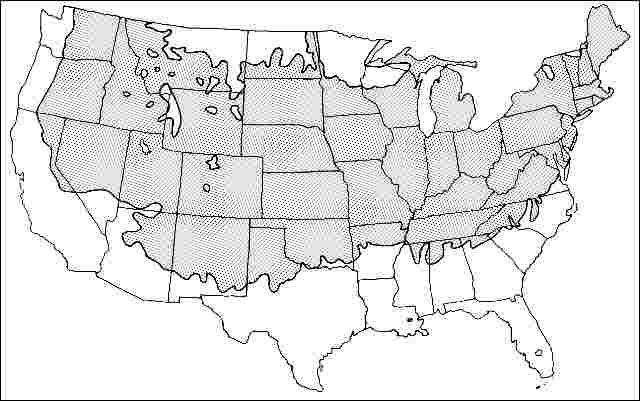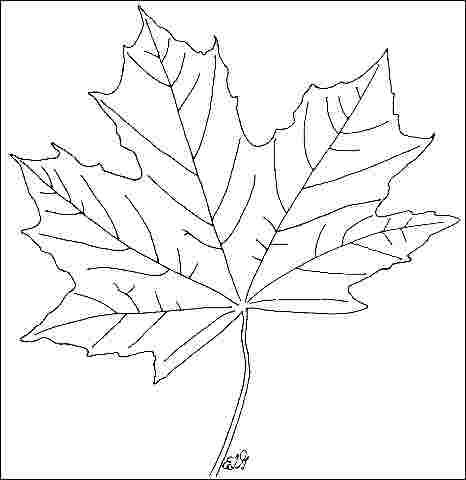Acer platanoides 'Globosum': 'Globosum' Norway Maple1
Introduction
This cultivar of Norway maple has a height and spread of 15 to 20 feet. The dense, compact, rounded crown fills with greenish-yellow flowers in the spring. Norway maple's dense shade and shallow root system competes with lawn grasses, and the shallow roots can make mowing under the tree a little difficult, but this is less of a problem on this small cultivar. The tree is easily transplanted, grows slowly, is adapted to a wide variety of soils (including alkaline), and has brilliant yellow fall color unmatched by most trees. It can also tolerate coastal conditions. Well adapted to street tree plantings where there are overhead wires. If you are looking for a compact, meatball-on-a-stick tree that requires no pruning, this may be the tree for you.

General Information
Scientific name: Acer platanoides
Pronunciation: AY-ser plat-uh-NOY-deez
Common name(s): 'Globosum' Norway maple
Family: Aceraceae
USDA hardiness zones: 4A through 7A (Fig. 2)
Origin: not native to North America
Invasive potential: invasive non-native
Uses: Bonsai; urban tolerant; street without sidewalk; screen; shade; parking lot island < 100 sq. ft.; parking lot island 100–200 sq. ft.; parking lot island > 200 sq. ft.; sidewalk cutout (tree pit); tree lawn 3–4 feet wide; tree lawn 4–6 feet wide; tree lawn > 6 ft. wide; highway median
Availability: somewhat available, may have to go out of the region to find the tree

Description
Height: 15 to 20 feet
Spread: 15 to 20 feet
Crown uniformity: symmetrical
Crown shape: round
Crown density: dense
Growth rate: slow
Texture: coarse
Foliage
Leaf arrangement: opposite/subopposite (Fig. 3)
Leaf type: simple
Leaf margin: lobed, dentate, incised
Leaf shape: star-shaped
Leaf venation: palmate
Leaf type and persistence: deciduous
Leaf blade length: 4 to 8 inches
Leaf color: green
Fall color: yellow
Fall characteristic: showy

Flower
Flower color: green
Flower characteristics: not showy
Fruit
Fruit shape: elongated
Fruit length: 1 to 3 inches
Fruit covering: dry or hard
Fruit color: brown, green
Fruit characteristics: attracts birds; showy; fruit/leaves not a litter problem
Trunk and Branches
Trunk/bark/branches: branches droop; not showy; typically one trunk; thorns
Pruning requirement: needed for strong structure
Breakage: resistant
Current year twig color: brown
Current year twig thickness: thick
Wood specific gravity: unknown
Culture
Light requirement: full sun, partial sun or partial shade
Soil tolerances: sand; loam; clay; acidic; alkaline; alkaline; well-drained; occasionally wet
Drought tolerance: moderate
Aerosol salt tolerance: moderate
Other
Roots: not a problem
Winter interest: no
Outstanding tree: no
Ozone sensitivity: unknown
Verticillium wilt susceptibility: susceptible
Pest resistance: resistant to pests/diseases
Use and Management
Trunks can crack on the southern side during the winter initiating some trunk decay, but the tree usually remains intact. A variety of birds are known to use seeds as a food source. Seeds germinate readily in the landscape and could become a nuisance.
A large number of other cultivars are available and are better suited for urban planting than the species. Those having colored summer foliage are 'Crimson King'—oval, 45 feet tall, foliage purple during the summer; 'Drummondii'—leaves edged in white; 'Schwedleri'—oval, 45 feet tall, foliage reddish in the spring then becoming green. Other cultivars are 'Almira'—round headed, mature height of about 20 feet; 'Cleveland'—upright growth habit, 50 feet tall; 'Columnare'—columnar or upright growth habit, 35 feet tall; 'Deborah'—new leaves appear as a deep red; 'Emerald Queen'—crown oval, growth rate faster, 60 feet tall; 'Erectum'—upright growth habit; 'Greenlace'—cutleaf cultivar with rapid growth rate; 'Olmstead'—upright growth habit, 45 feet tall; 'Summershade'—crown oval, growth rate faster than species. 'Superform'—round, 45 feet tall, may show more resistance to frost cracks.
Pests
Leaf stalk borer and petiole borer cause the same type of injury. Both insects bore into the leaf stalk just below the leaf blade. The leaf stalk shrivels, turns black, and the leaf blade falls off. The leaf drop may appear heavy but serious injury to a healthy tree is rare.
Gall mites stimulate the formation of growths or galls on the leaves. The galls are small but can be so numerous that individual leaves curl up. The most common gall is bladder gall mite found on silver maple. The galls are round and at first green but later turn red, then black, then dry up. Galls of other shapes are seen less frequently on other types of maples. Galls are not serious, so chemical controls are not needed.
Aphids infest maples, usually Norway maple, and may be numerous at times. High populations can cause leaf drop. Another sign of heavy aphid infestation is honey dew on lower leaves and objects beneath the tree. Aphids are controlled by spraying or they may be left alone. If not sprayed, predatory insects will bring the aphid population under control.
Scales are an occasional problem on maples. Perhaps the most common is cottony maple scale. The insect forms a cottony mass on the lower sides of branches. Scales are usually controlled with horticultural oil sprays. Scales may also be controlled with well-timed sprays to kill the crawlers.
If borers become a problem it is an indication the tree is not growing well. Controlling borers involves keeping trees healthy. Chemical controls of existing infestations are more difficult. Proper control involves identification of the borer infesting the tree then applying insecticides at the proper time.
Diseases
Verticillium wilt symptoms are wilting and death of branches. Infected sapwood will be stained a dark or olive green, but staining can't always be found. If staining can not be found, do not assume the problem is not verticillium wilt. Severely infected trees probably can't be saved. Lightly infected trees showing only a few wilted branches may be pulled through. Fertilize and prune lightly infected trees. This treatment will not cure the problem but may allow the tree to outgrow the infection. Girdling roots will cause symptoms that mimic verticillium wilt.
Scorch occurs during periods of high temperatures accompanied by wind. Trees with diseased or inadequate root systems will also show scorching. When trees do not get enough water they scorch. Scorch symptoms are light brown or tan dead areas between leaf veins. The symptoms are on all parts of the tree or only on the side exposed to sun and wind. Scorching due to dry soil may be overcome by watering. If scorching is due to an inadequate or diseased root system, watering may have no effect.
Nutrient deficiency symptoms are yellow or yellowish-green leaves with darker green veins. The most commonly deficient nutrient on maple is manganese. Implanting capsules containing a manganese source in the trunk will alleviate the symptoms. Test soil samples to determine if the soil pH is too high for best manganese availability. Plants exposed to weed killers may also show similar symptoms.
Tar spot and a variety of leaf spots cause some concern among homeowners but are rarely serious enough for control.


